Introduction: Challenging Internet Fads
The fitness industry loves its buzzwords. The internet is awash with terms like “functional training” that are often packaged with gimmicky movements that have little real-world application.
A common internet trend is combining resistance exercises with instability, claiming to improve both mobility and balance. However, most of these unstable exercises fail to enhance real-world strength or mobility.
True functional mobility isn’t about balancing on a BOSU ball while doing kettlebell swings. It’s about moving efficiently, pain-free, and with strength through your full range of motion—whether that’s getting out of a chair, lifting something overhead, or trekking in uneven terrain.
This is where Age Free Strength optimal exercises and routines come in. They don’t just train muscles; they train movement, ensuring you develop strength with mobility that transfer directly into daily life.
This post dives deep into the difference between mobility and flexibility, challenges conventional stretching dogma, and lays out a practical approach to enhancing both—without wasting time on ineffective trends.
Please read this post in conjunction with The Best Abs and Core Exercises post which has mobility overlaps, as do our Members Area Leg, Hip Flexors and Glute exercises.
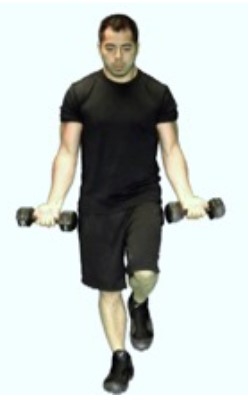
Another common example of a resistance exercise with instability – bicep curls on one leg, for no benefit.
Become an Age Free Strength Member to see how Mobility fits into our Routines.
Mobility vs. Flexibility: Understanding the Difference
- Flexibility is the passive ability of a muscle to lengthen. It’s the stretch you feel when you touch your toes.
- Mobility is the active ability to move a joint through its full range of motion with strength and control. It’s what allows you to squat deeply or reach overhead without compensating.
In short: You can be flexible but still lack mobility. But if you have good mobility, you typically have ‘enough’ flexibility.
Understanding this distinction is key because many training programs overemphasize flexibility without addressing strength with mobility, leading to inefficient or even counterproductive workouts.
But What is ‘Enough’ Flexibility?
Having ‘enough’ flexibility means having sufficient range of motion to perform daily and athletic movements without restriction, discomfort, or compensation. It doesn’t mean being able to perform extreme contortions or passive stretches beyond practical use.
For example, if you can comfortably reach overhead and press a weight without excessive arching in your lower back, your shoulder and thoracic mobility are sufficient. If you can squat deeply while keeping your heels down and without knee pain, your hip and ankle mobility are likely in a good range. Similarly, if you can hinge at the hips without excessive rounding in your lower back, your hamstrings have adequate flexibility for functional movement.
In contrast, excessive passive flexibility without control—such as being able to place your foot behind your head but struggling with stability in a lunge—offers no real advantage and can increase injury risk. Strength through a full range of motion is what ensures practical, usable flexibility for everyday life and performance.
This distinction is why we consider mobility as the king. Mobility ensures that strength is expressed through a full range of motion, whereas flexibility alone does not improve movement control or stability.
Internet Myth: “You need dedicated flexibility training for mobility.”
Reality: Age Free Strength exercises, based on the Brig20 biomechanics model, naturally take joints through their full range of motion while under load. This automatically develops both flexibility and strength in a way that carries over to real-world movement.

Not sure of the benefits in the above image – other than for a circus act.
The Risks of Overstretching and Excessive Flexibility
One of the most persistent myths in fitness is the idea that more flexibility is always better. While some flexibility is necessary, excessive stretching—especially without corresponding strength—can actually weaken joints and lead to instability.
- Hyperflexibility can reduce joint integrity, increasing the risk of injuries such as dislocations and ligament tears.
- Static stretching before resistance training can reduce strength output, making it counterproductive for performance.
The Solution? Train strength through mobility. Prioritize exercises that take your body through controlled, loaded movement patterns, rather than forcing excessive passive stretching.
For instance, someone with hypermobile shoulders may have no issue passively reaching extreme ranges but struggle to maintain control under load, increasing their risk of dislocations.
Functional Mobility Through AgeFreeStrength Training
Forget the internet hype about “functional training.” True functional mobility means being able to move freely and strongly in daily life. This is exactly what Age Free Strength training achieves.
Here’s how:
- All optimal exercises in our programs safely take joints, under load, through a full range of motion. This ensures both strength and flexibility develop simultaneously.
- Strength developed in these ranges directly translates into real-world mobility. The ability to squat, press, pull, and hinge under control makes everyday tasks (lifting, bending, climbing, trekking) easier and safer.
- By integrating movement patterns that mirror daily activities, our routines enhance stability, balance, and joint integrity—without the need for functional gimmicks.
Rather than wasting time on circus-style exercises, we focus on progressive, biomechanically sound training that builds mobility, strength, and resilience where it matters.
The Right Way to Use Stretching
While static stretching has its place, timing and application matter.
- Before training: Avoid static stretching. Instead, perform dynamic mobility drills to prepare your joints for movement with load.
- After training: This is the best time for static stretching, as muscles are warm and more responsive to lengthening.
- Daily mobility work: Simple, structured mobility exercises improve joint function and prevent stiffness over time.
What About Balance?
As for flexibility, we consider Balance as a sub-set of Mobility. Just as flexibility should support strength, balance should support stability rather than create unnecessary challenges. Let’s explore the reality of balance training.
Balance training is widely promoted as essential for mobility, but in reality, it is a learned skill that improves with practice rather than an inherent ability that needs constant training.

Activities like squatting on a Bosu ball or standing on one leg while lifting weights are not inherently beneficial for functional mobility. Instead, they fall under proprioceptive (unstable) training—which improves the ability to perform that specific task.
If you train to balance on a BOSU ball, you get better at balancing on a BOSU ball—not at walking on uneven ground.
While proprioception is valuable for certain sports that require rapid adjustments to unstable conditions, it has little practical benefit for most people. Everyday functional mobility occurs on solid ground, where stable strength training is far more effective for building usable strength and joint integrity.
Additionally, performing strength exercises on unstable surfaces reduces force output and training effectiveness while increasing the risk of injury.
That said, balance exercises can play a valuable role for individuals with impaired balance, particularly but not exclusively, some older adults or those recovering from injuries. As balance naturally declines with age or due to certain medical conditions, targeted exercises can help improve stability, reduce fall risk, and enhance confidence in daily movement. Simple drills like single leg stands, tandem walking, or controlled step-ups can strengthen stabilizing muscles and reinforce neuromuscular coordination.
For most people, however, improving lower-body strength and coordination is more effective than dedicating excessive time to balance drills on unstable surfaces
In summary, strength training with stability provides the most effective approach to maintaining independence and mobility. For real-world mobility and strength, stability and control are far more valuable than artificial instability.
Mobility and Flexibility Drills
Below are simple, effective drills that prepare your body for movement under load, while reinforcing the mobility principles discussed above.
You don’t need a lot of mobility and flexibility movements to ensure your joints, muscles and connective tissues are ready for an Age Free Strength workout. This is because our biomechanics-based exercises take joints and connective tissue safely through their full range of motion, especially when paired with our moderate weight rest/pause (Myo-Rep) exercise and routine protocols.
However, we also understand that many people want to explore mobility drills. It is a popular trend and a good one at that. A very good website that is aligned with the Age free Strength views on ‘strength through the full range of motion’ is Movesmethod.
On our rest days between strength training routines, and as routine warm up/looseners we incorporate mobility exercises and flows.
Ready to move like you’re decades younger?
Below you’ll find just a taste of the mobility drills we use—but it’s only the tip of the iceberg.
Coming Soon Inside the Members Area
In addition to our Members strength training routines, we’re building dedicated Mobility pages packed with video demos, step-by-step cues, and real-time “flow” sequences that show exactly how we deploy mobility. You’ll learn:
- Where to begin and progressions that take you from limited range of motion to full, pain-free movement.
- Plug-and-play mobility circuits you can drop into our, or your, resistance routines – or run as a stand-alone routine on recovery days.
Lifetime Access for AU$50
One single payment unlocks all current strength training lessons plus every future update – for life. If you prefer to wait for the Mobility content, leave a comment in this Post and as soon as the new Members Area Mobility sections launch, you will be the first to know.
In the meantime, feel free to have a look at Movesmethod for a huge variety of effective Mobility drills.
Mobility – All in One
The All-In-One limbers up most of your joints and muscles. It covers hips, hamstrings, ankles, knees, quads, glutes and your upper body.
Do 5 rotations on one side before reversing the move back to the standing position and then do the other side. Completing 5 rotations on each side is 1 set. Repeat for 3 total sets.
Mobility – Total Body Extension
To warm up your whole body and to get the heart pumping a bit do 10 thrusts of this mobility move, the Total Body Extension.
We sometimes superset the All in One (AiO) move with the Total Body Extension (TBE) – 2 sets of All in One alternating with 1 or 2 sets of Total Body Extension: AiO-TBE-AiO
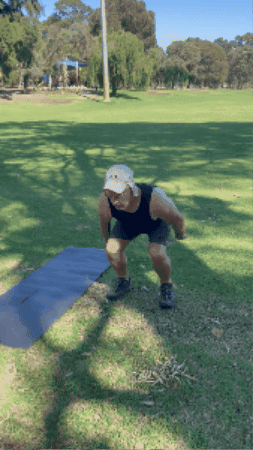
Knee and Hip Looseners
The knees are arguably the second most vulnerable joint after the shoulders. We don’t recommend diving straight into deep, ‘knees over toes’ Sissy Squats without preparing them first.
Below is the knee and hip preparation movements we do. My hips have great mobility forward and back but not so good with external rotation. I work on improving it every day with deep sitting squats combined with knee push-aparts and with Cossack Squats.
With the deep sitting squat, I aim for at least 3 x 5-minute sessions (15 minutes total minimum every day), rotating in each session through a relaxing sitting squat to knee push-aparts to the squat with torso rotations – and repeat.
In our opinion, this deep sitting squat combination, as simple as it is, provides the most benefit for effort of all mobility moves.
These moves are a perfect mobility pairing with our Members Area Legs, Glutes and Hip Flexor exercises.
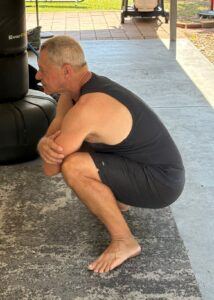
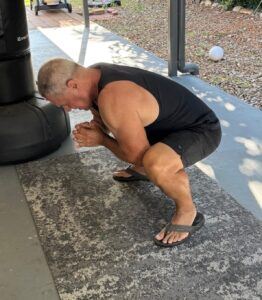
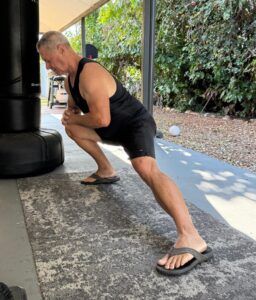
Shoulder Looseners
A few years ago, and prior to my Age Free Strength era, I had a lot of shoulder pain, particularly in my right shoulder. This pain was developed through years of doing overhead presses and barbell bench presses.
To prepare for the Age Free Strength biomechanics-based shoulder exercises, I did these shoulder looseners prior to each Routine. With this approach I was initially able to complete the shoulder exercises with mild discomfort and after a couple of months the pain had completely gone – and it hasn’t returned.
The content provided in this post is for informational purposes only and should not be considered a substitute for professional medical advice, diagnosis, or treatment.
Always consult with a qualified healthcare provider, such as a physician or physiotherapist, before starting any new exercise regimen, especially if you experience shoulder (or any joint) pain or have existing joint conditions.
Engaging in physical activity without appropriate medical guidance may result in injury. If you experience any discomfort or pain during exercises, discontinue immediately and seek medical attention.
The images below show the side stretch, the overhead stretch and the bending forward reverse stretch. With resistance bands I work my way into the stretch, gradually deepening it. I hold it in the stretch position only for a couple of seconds and then release for 10 ‘dynamic stretches’ on each shoulder for all 3 movements.
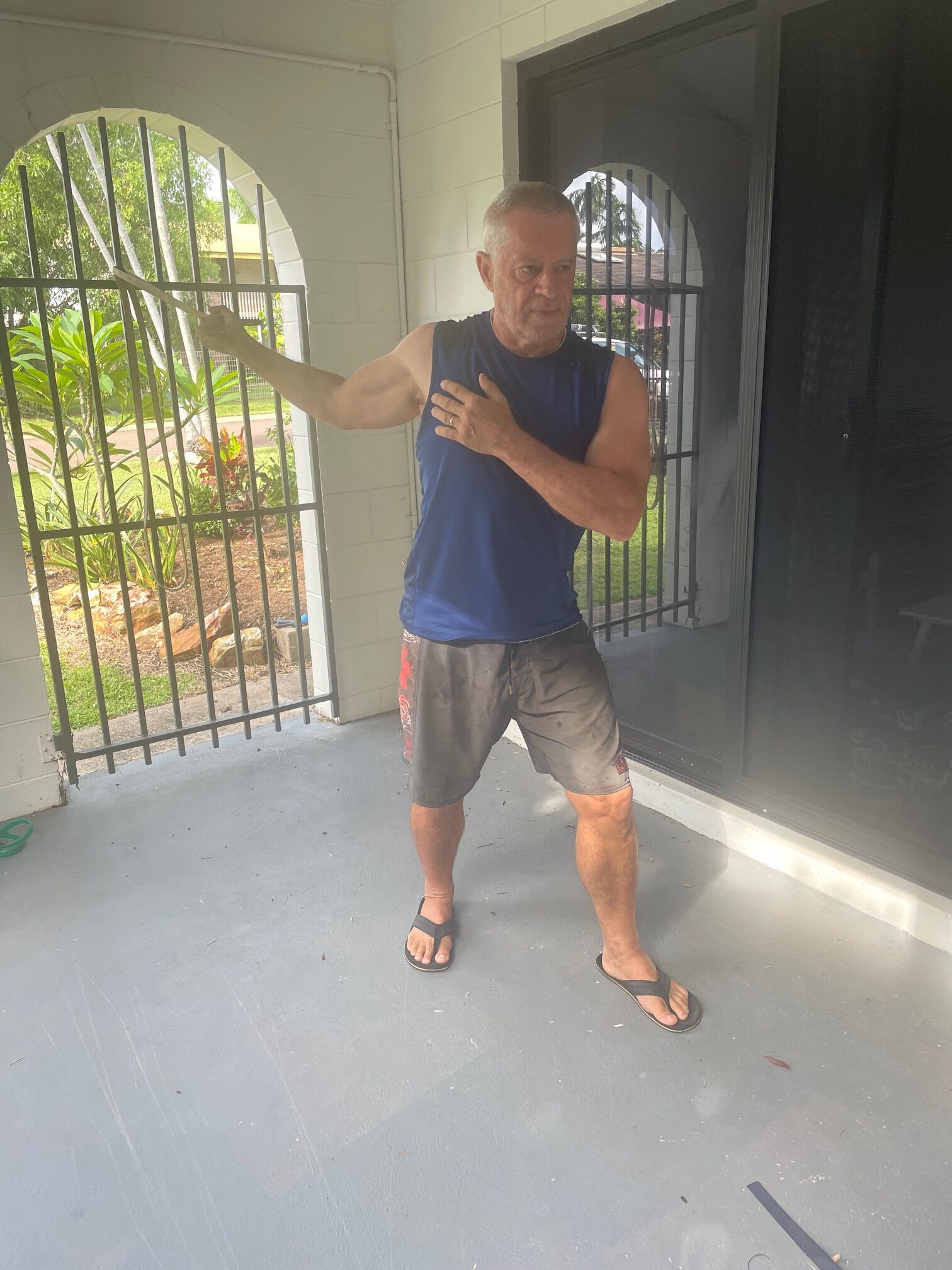
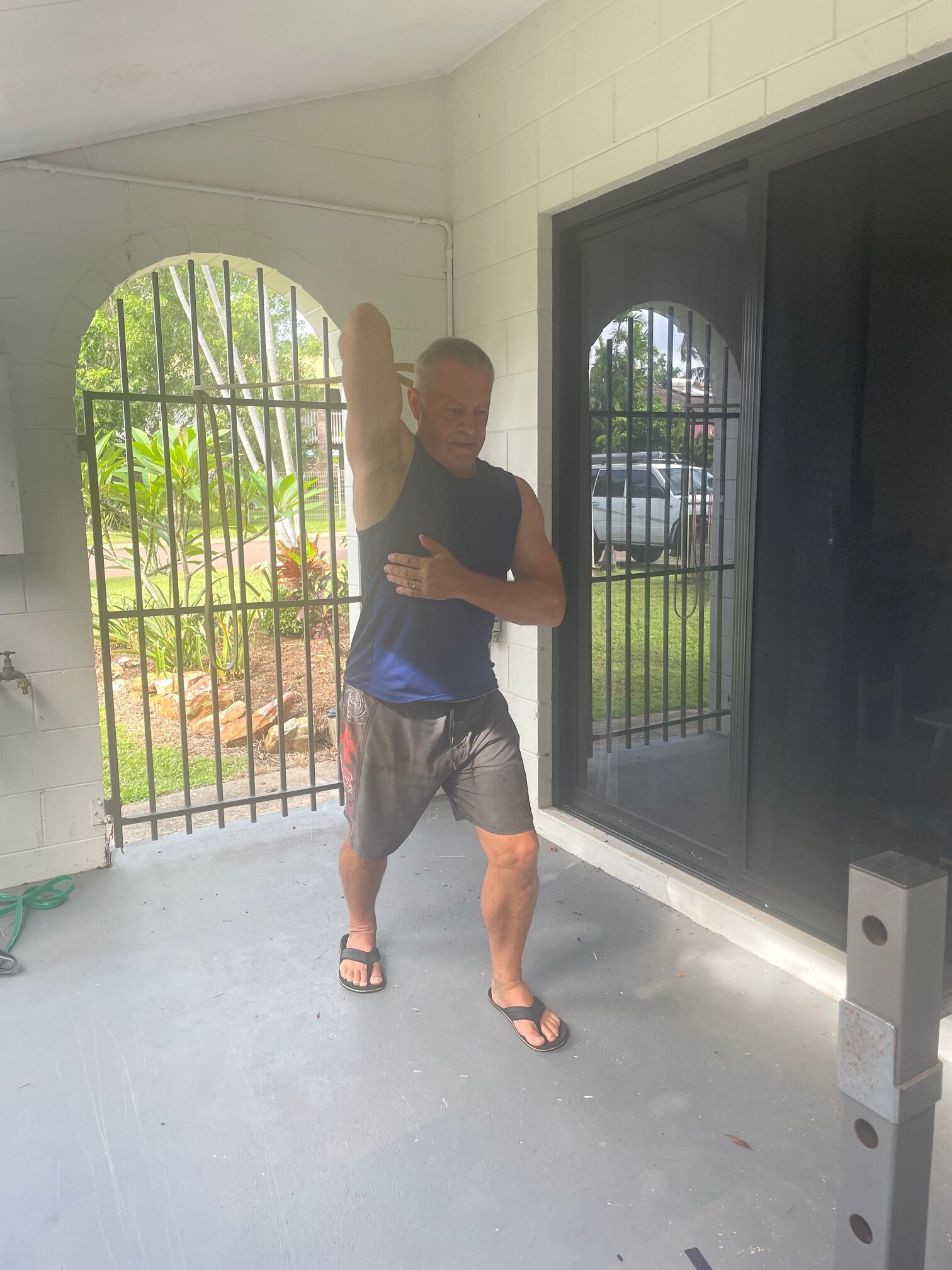
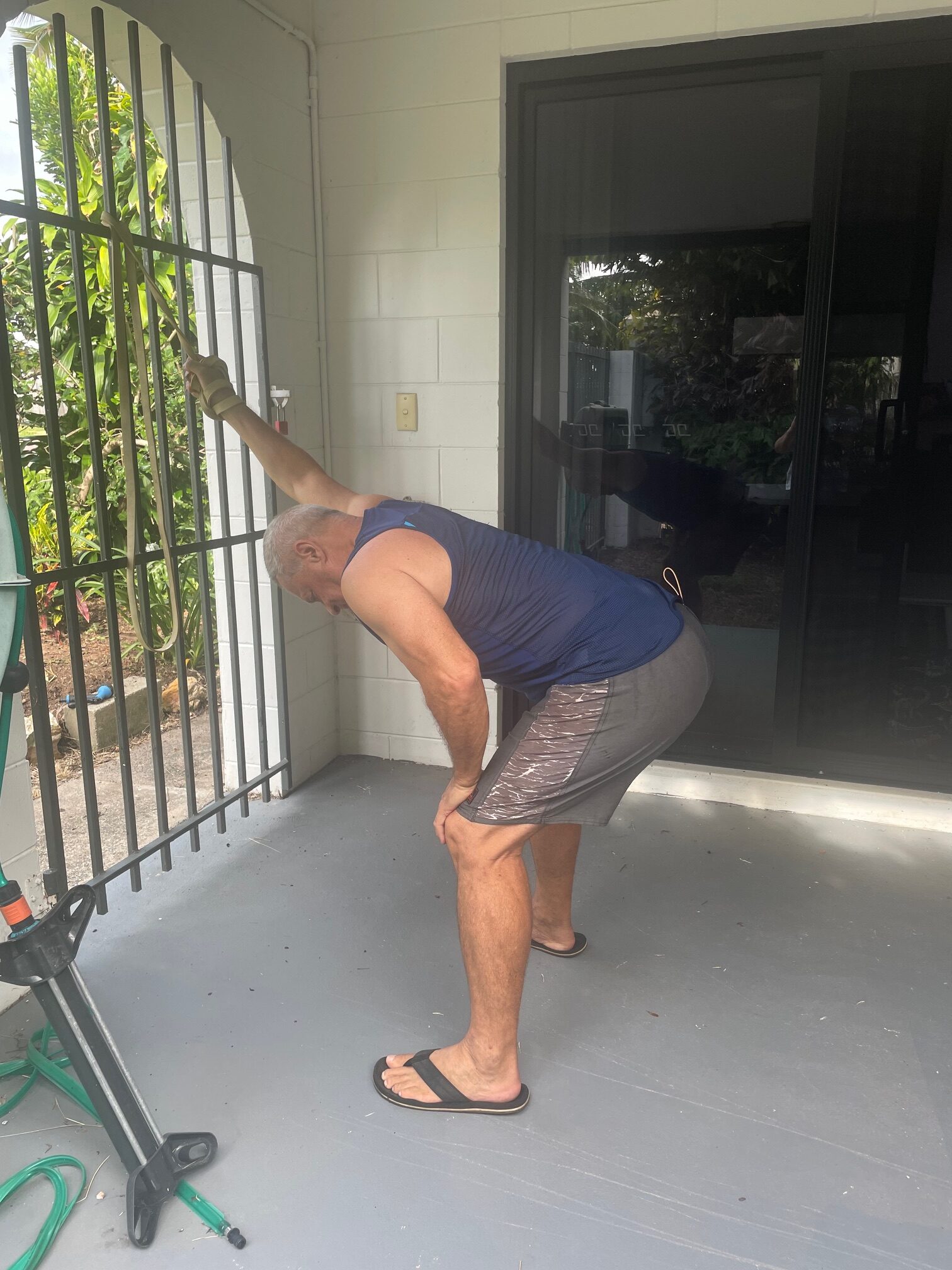
Below is the Up and Over and the Dead Hang. These are now the only shoulder mobility exercises I do.
My best Dead Hang to date is 90 seconds, which is in the top tier for any age group and ‘elite’ for someone (e.g. me) born in 1959.
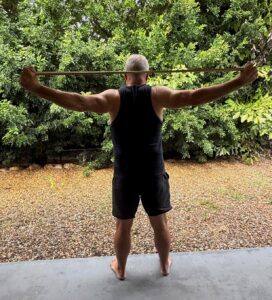
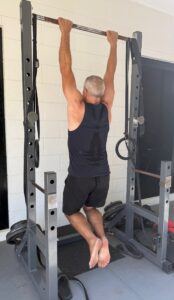
Become a Member to see how mobility exercises and flows fit into our Routines.
Post Exercise Stretching
If you want to do passive or static stretching, we strongly recommend doing it as a separate routine from the strength training or after a specific muscle group exercise. We sometimes join Yoga groups in our touring and camping travels.
Although we typically don’t do static stretching (apart from the occasional Yoga session), there may be some benefits in post resistance exercise static stretching, particularly if you have muscle group soreness.
There is a plethora of websites for stretching that I won’t repeat here.
Our Mobility and Flexibility Test Case
There are reasons why we know that we have adequate mobility and flexibility. Here they are:
- No joint movement restriction or pain in everyday activities.
- Our outdoors camping lifestyle constantly requires on the move ‘functional’ movements that we have no trouble with.
- We never miss a workout and feel energized after it.
- We regularly trek, often with steep, uneven ascents and descents with no issues.
- But, most of all, we have young grandkids – they really put us to the test.

What Others Say: Aligning With Proven Principles
The approach of prioritizing mobility through strength over passive flexibility is widely supported by experts in biomechanics, strength training, and rehabilitation science. Leading voices in movement and sports performance emphasize that:
- Mobility is about control, not just flexibility. Having the ability to move efficiently through a full range of motion with strength is far more beneficial than being hyper-flexible without control.
- Full-range strength exercises naturally improve flexibility. Training movements that load joints through their entire range of motion develops both strength and usable flexibility simultaneously.
- Dynamic mobility drills are superior for warm-ups. Instead of passive static stretching before a workout, using controlled movement drills prepares the joints and muscles for activity without reducing strength or power output.
- Excessive flexibility can weaken joints. Without adequate strength to support extended ranges of motion, hypermobility can lead to joint instability and increased injury risk.
This modern perspective challenges outdated flexibility myths and reinforces the idea that training strength through movement is the best way to build both functional mobility and long-term joint health.
Conclusion: Train Smart, Move Freely
Mobility isn’t a trend—it’s a necessity. The best way to improve it isn’t by chasing internet fads or performing excessive passive stretching. Instead, train strength through full ranges of motion, integrate functional movement patterns, and only use stretching where it provides real benefits.
With the right approach, you won’t just be “flexible” or “mobile”—you’ll move powerfully and freely for life.
The key is simple: Build strength where it matters, move with control, and let your mobility serve your real-world needs.
